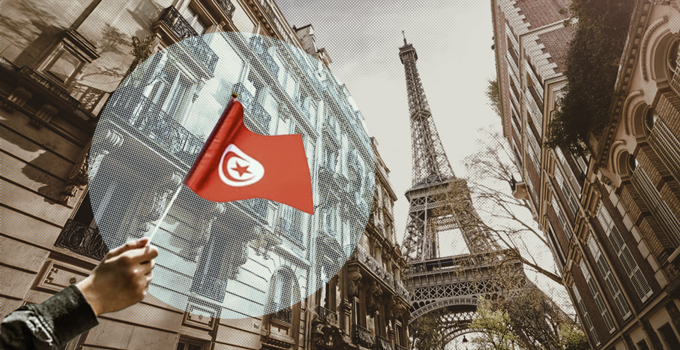Jamel, Mohamed and Taoufik, all in their sixties, are seated in a cafe at the entrance of a village called Sedouikech. Their conversation turns around one subject: the continuous departure of young people from the area since April. « An average of 400 leave every month », Mohamed remarks.

In the absence of official statistics, residents quantify these departures using the number of passport requests filed at the village delegation. Beyond statistics, however, the phenomenon is plain to see. An unusual calm blankets the village. Today is market, but the typical Monday morning bustle is nothing more than a distant memory. In the cafe, the few regulars are all over the age of 50. It’s a miracle that the cafe has kept its doors open. In the past several weeks, others like it have been forced to close due to the shortage of servers. A young man on a scooter drives by. « I can count on one hand the number who are still here. That guy, for example, is a nurse at the hospital », Jamel notes. « I spoke with him recently, he doesn’t know what to think, all of his friends have left ». The three men delve into their ongoing tally, taking into account every family in the village. « In the house next to mine, there is only an elderly couple. They are literally alone; I’ve never seen that before », Mohamed says in a tone of alarm. Today, when two young men cross one another in the street, they greet each other with « You haven’t left yet? », or « So when are you leaving for Serbia? »
The Balkan route
What has provoked this sudden outflux of youth? The invariable explanation offered by Sedouikech residents is that the war in Ukraine facilitated entry into the European Union via the Balkan route. Between July 2015 and March 2016, thousands of men and women primarily from Syria, Iraq and Afghanistan followed this trajectory. A number of political decisions, including the construction of a four-meter high wall during this period by the Hungarian prime minister, reduced the migration flow. Five years later, there was a massive return of migrants by the same route. Without providing any explanation for this phenomenon, Frontex, the European border protection agency, announced in August that this was « the most active migratory route towards the European Union », with an increase of 205% from 2021. Whatever the reason, there is a general sense that this route could become inaccessible at any moment.
Young people think that it’s now or never, that it’s an opportunity not to be missed since it’s temporary ,
says Zied Bounouh, president of the association Houmetna.
This is especially the case since a number of Tunisians were repatriated from the Belgrade airport. Nevertheless, the Balkan route remains less dangerous than crossing the Mediterranean, where more than 3,000 people reportedly died or disappeared in 2021.
Imagine that you’re 25 years old and don’t have a job. Every day you have a coffee with friends, and one day you wake up to discover photos on social media of the same friends standing in front of the Eiffel Tower. So you ask yourself, ’Why not me?’.
This was the case for Fathia’s son Houssem, who left the village with a dozen young men when he was 26 years old. After ten unbearable days during which she had barely any news, Fathia was relieved when her son arrived in Paris, safe and sound. But her feeling of anguish remains. With a closed face and distant look, she describes the route traveled by her youngest son, freshly graduated from university: « After taking a plane to Istanbul and then another to Serbia, he walked through a forest for several days with his friends before arriving at the Serbia-Hungary border ». At that point, the group had two options: either climb the wall or cross a river in a makeshift boat. Her son was one of the lucky ones to cross on the first try. The same is not the case for most migrants who make several crossing attempts and are subjected to violence by police stationed throughout the perilous journey. Past the Hungarian border, the trek continues towards the west: Austria, Switzerland and finally France, where the vast majority are welcomed by friends or relatives. Smugglers require between 15,000 – 20,000 dinars for the whole trip. A sum which Fathia did not hesitate to give to her son: « What else could I have done? He would have managed to get the money some other way ». Zied Bounouh describes the pressure that weighs on parents:
They often find themselves with their backs against the wall and don’t realize the ordeal awaiting their children. I remember one mother who prepared a suitcase for her son… a suitcase!
The ones who stay
Souad’s two sons left within ten days of one another. She still hasn’t gotten over their departure. « Youssef is 32 years old and was only making 300 dinars a month. When he told me he was leaving with 13 other youth from the village, I couldn’t stop him since I had nothing better to propose. But my heart still bleeds over it », she sighs. The presence of her other son, a plumber, provided some consolation. But following three failed attempts to obtain a visa, he too set out along the same route.
Today, I’m alone with my husband and one daughter to marry… But who is she going to marry now that all of the young men have left?
« Go into any home in this village », Souad continues, « and you will find only elderly folk who share the same story ». This is because leaving « illegally » means not being able to return before the lapse of at least a decade, the time it takes to establish a regular situation abroad. Souad is haunted by this prospect. « Will I ever see my boys again ? » she worries aloud.

Indeed, this exodus of young people is a source of anxiety for residents, who characterize the resulting socio-economic instability: isolation of the elderly, closure of local businesses, abandonment of agricultural lands.
The village’s entire organization is undermined by these departures. Youth have a key role in our environment: they represent our future. Without them, it’s as if our village were destined to disappear, Jamel says mournfully.
For Zied Bounouh, it’s also a blow for the association: « There was one young man who was very dynamic, very active within the association. From one day to the next, he was gone. It was as if he was fleeing something ». In this context, it is difficult to envision the future: « What is the point of our actions if youth do not benefit from them? » Zied wonders. In the cafe at the entrance to the village, Jamel, Mohamed and Taoufik are silent as they finish their last sips of coffee. They know that nothing will be the same. « There is nothing we can do in the face of the distress that our youth face, even though their departures shake us to the very core » admits Taoufik, who has managed to keep his son home. That is, of course, until he too, decides to leave.






iThere are no comments
Add yours